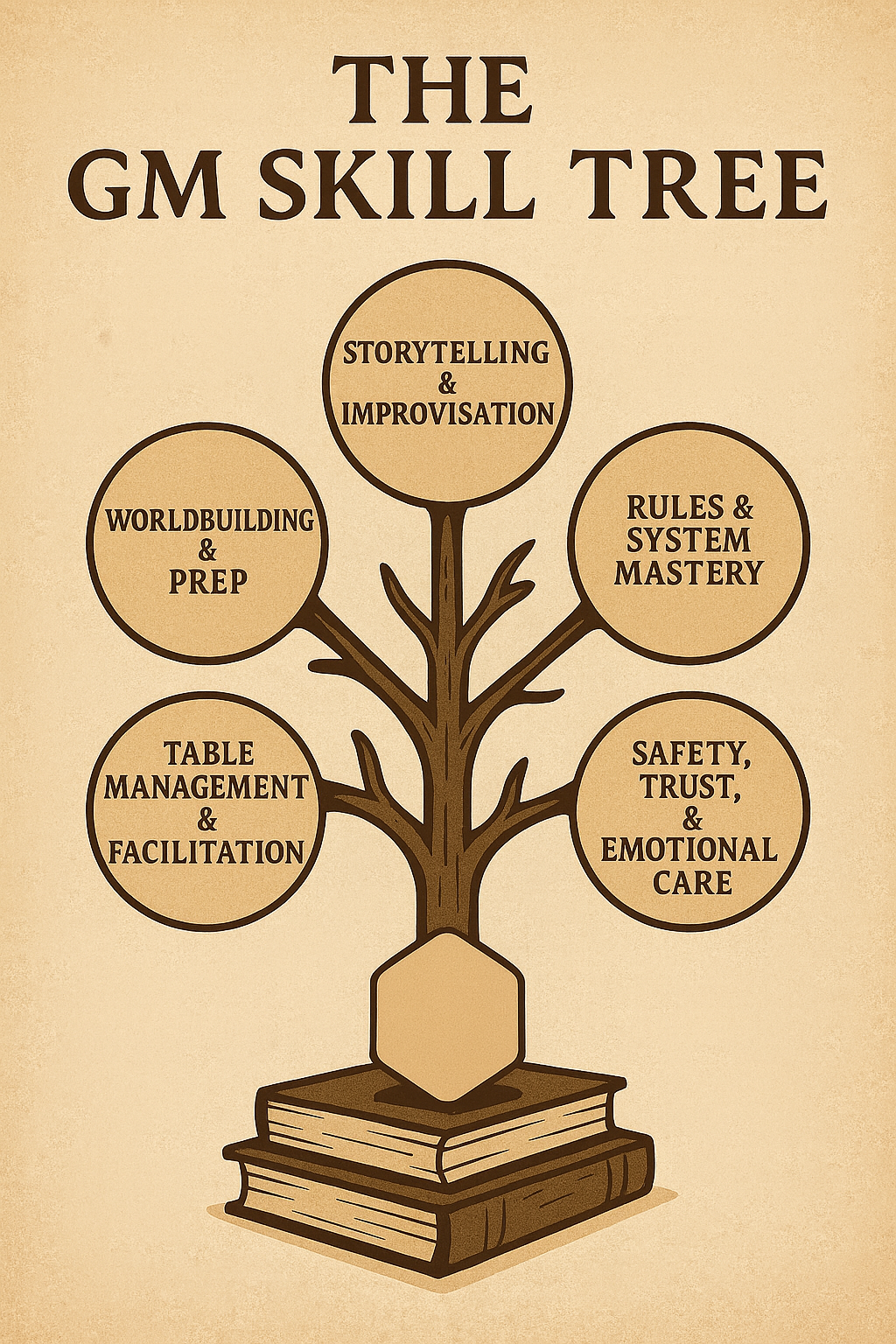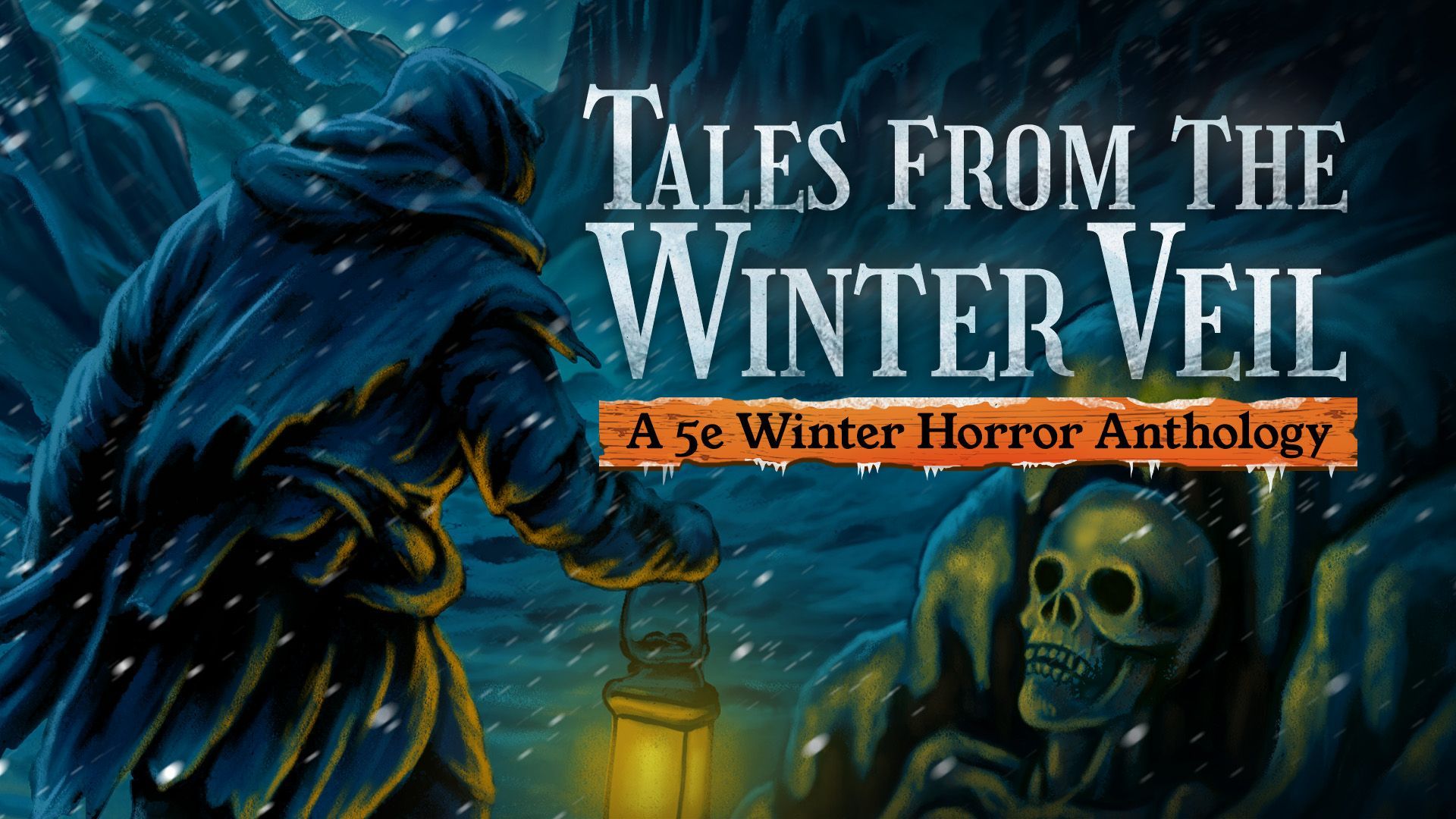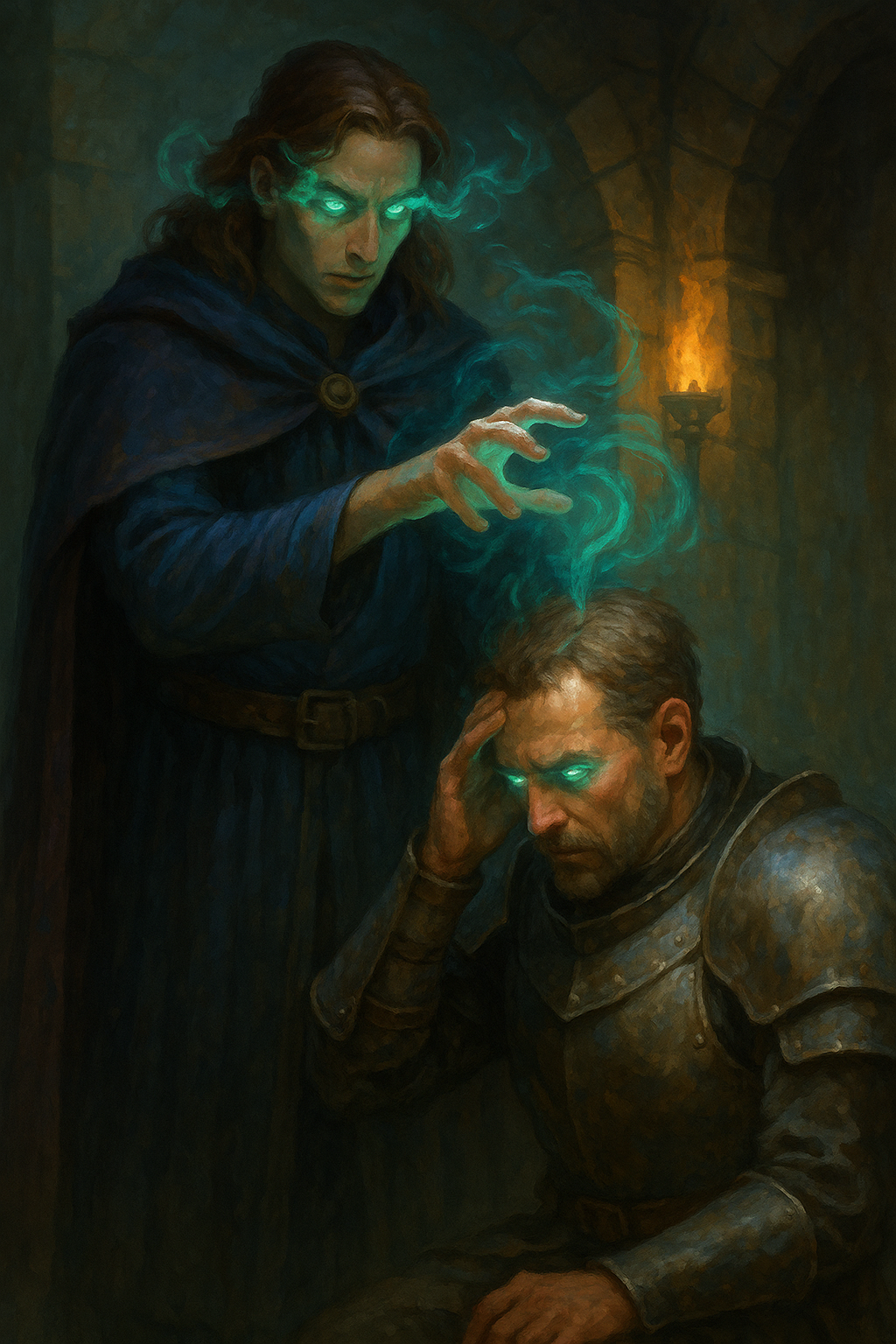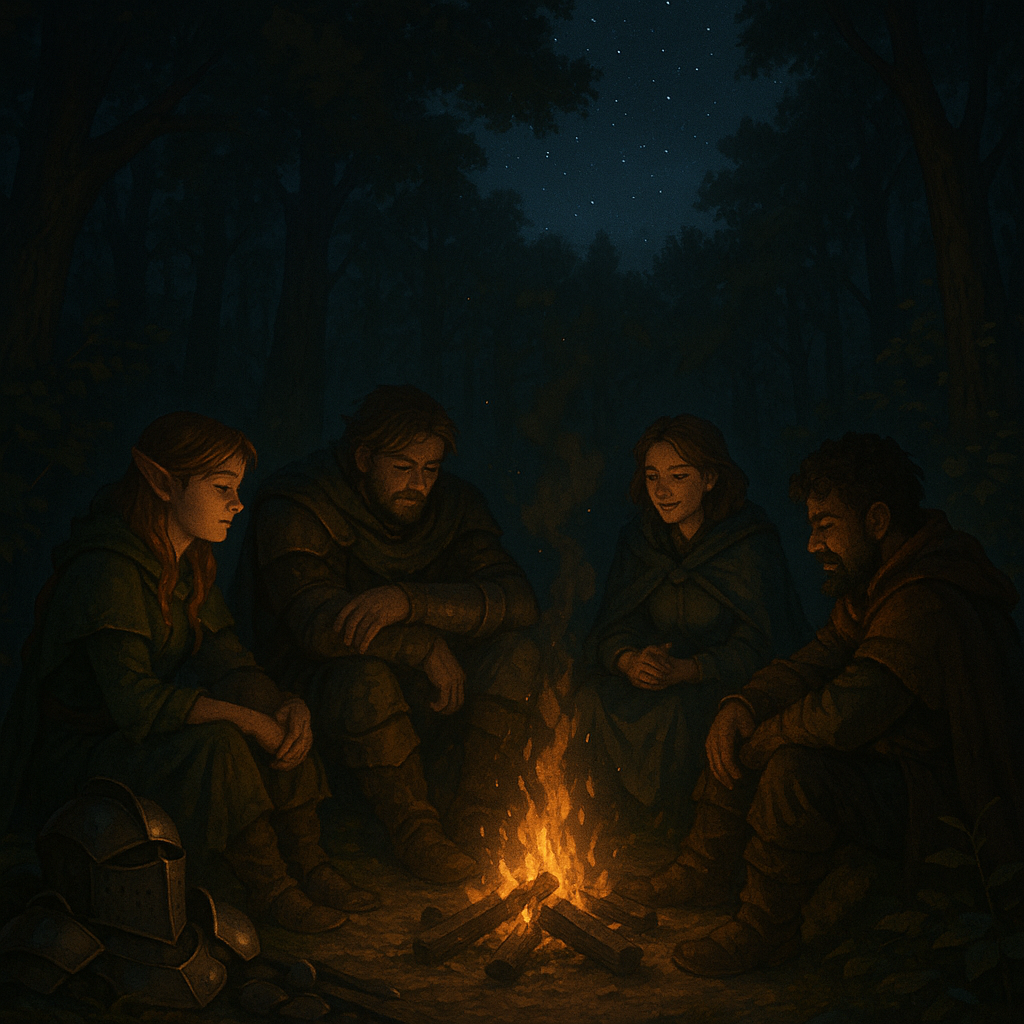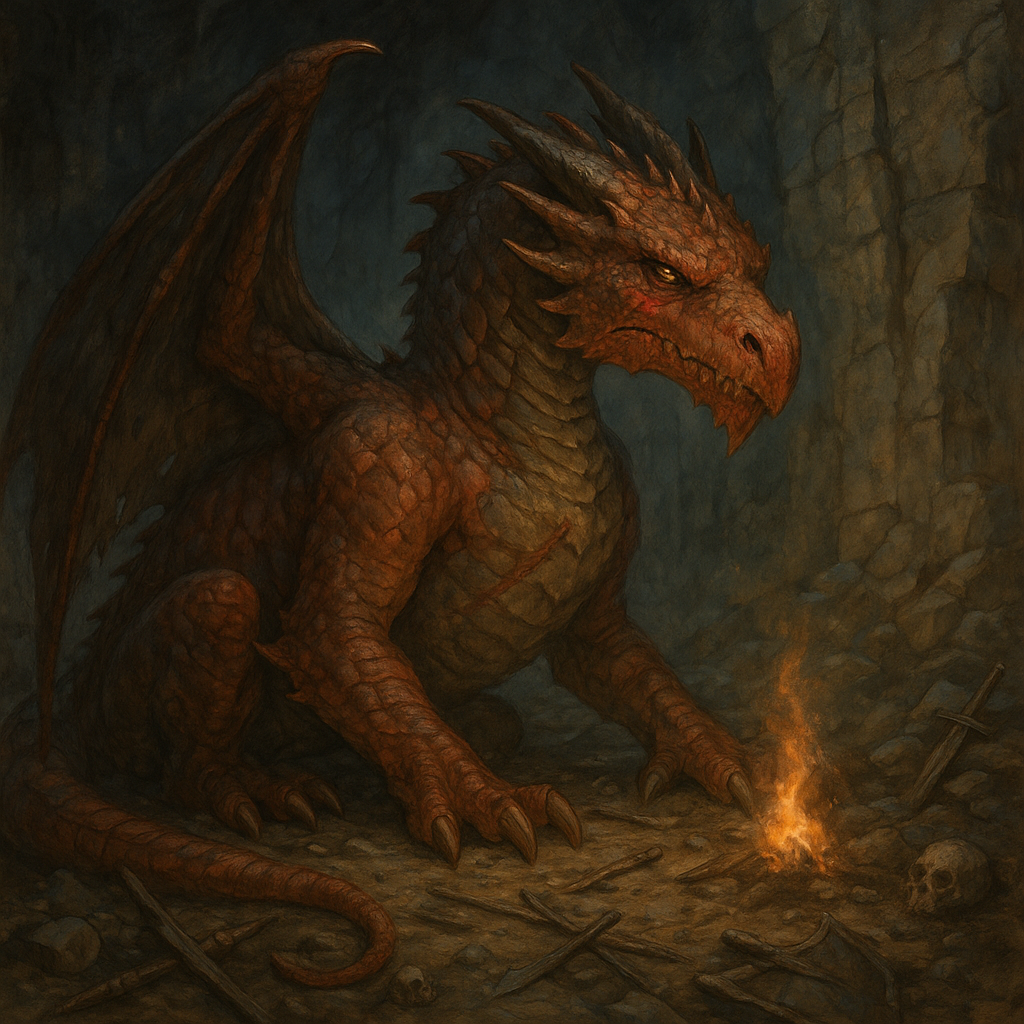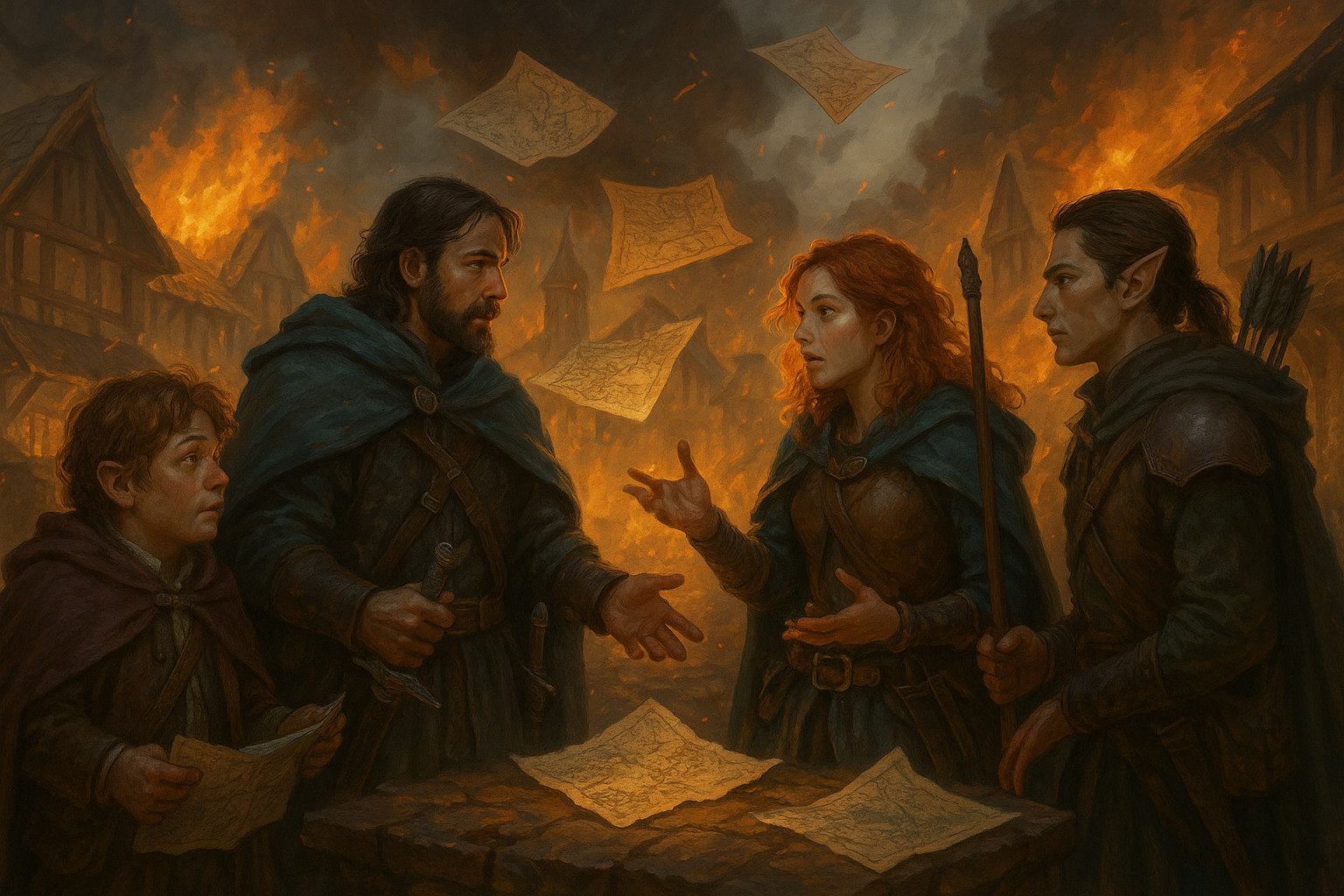Campaign Structure Strategies
Dear Readers, welcome again to another exciting exploration into the intricate world of tabletop role-playing games! Whether you’re a seasoned Dungeon/Game Master or a curious adventurer just starting your journey, one of the key elements that can significantly impact your game is the structure of your campaign. The way you organize your narrative, encounters, and overall plot can shape the experience for both you and your players. In this extensive blog post, we’ll delve into various campaign structure strategies to help you create immersive and engaging role-playing game adventures.
Note: While I will often reference D&D, many of these principles apply to just about any other gaming system, be it Cyberpunk RED (super fun), Tales From the Loop (also very fun!), or whatever it is you love to play!
The Foundation: Understanding Campaign Structure
Before we dive into specific strategies, let’s establish a solid foundation by understanding what campaign structure entails. At its core, the structure of a D&D campaign is the overarching framework that defines how the story unfolds. It’s the blueprint that guides the DM and players through a series of interconnected events, encounters, and plot points. A well-thought-out structure provides coherence, progression, and a sense of purpose to the campaign.
Linear vs. Non-Linear Campaigns
The first decision you’ll need to make is whether you want your campaign to follow a linear or non-linear structure. Each approach has its own set of advantages and challenges.
Linear Campaigns
In a linear campaign, the narrative unfolds in a predetermined sequence. Players progress through a series of events, quests, or locations in a linear fashion, much like chapters in a book. This structure is often easier for new DMs to manage, as it allows for more controlled pacing and storytelling. It’s also well-suited for campaigns with a strong central plot that builds upon itself.
However, the downside of a linear campaign is that it can feel restrictive for players who enjoy a more open-world experience. Additionally, if players deviate from the intended path, the DM may need to improvise or gently guide them back on track.
Non-Linear Campaigns
Non-linear campaigns offer more flexibility, allowing players to explore the game world in a less structured manner. The narrative is not bound to a strict order, and players have the freedom to choose their paths and make meaningful decisions that impact the story. This style of play encourages player agency and creativity, as they can pursue different quests or storylines based on their interests.
On the flip side, non-linear campaigns can be more challenging to prepare for as a DM. The story becomes more dynamic, and it requires a higher level of improvisation to adapt to player choices. Maintaining a cohesive narrative while allowing for player agency requires careful planning and a willingness to adapt on the fly.
Session Structure
Once you’ve decided on the overall campaign structure, it’s essential to consider the structure of individual game sessions. How you organize each session can greatly influence the pacing, engagement, and overall enjoyment of the game.
Three-Act Structure
The three-act structure is a classic storytelling framework that can be adapted to D&D sessions. In this approach:
- Act 1 (Setup): Introduce the main quest or objective, set the scene, and present the initial challenge or conflict.
- Act 2 (Confrontation): Players delve deeper into the challenge, face obstacles, and uncover more about the overarching plot. This act often involves major twists or revelations.
- Act 3 (Resolution): The climax of the session, where players confront the main challenge and resolve key plot points. Consequences of their actions become apparent.
This structure provides a clear narrative arc for each session, keeping players engaged and invested in the unfolding story.
Sandbox Sessions
For non-linear campaigns, a sandbox session structure allows players to explore the game world freely. The DM prepares various locations, NPCs, and potential encounters, and players choose their path. This structure requires a balance between prepared content and improvisation, as the DM responds to player choices on the fly.
Strategies for Campaign Structure
Now that we’ve covered the basics, let’s delve into specific strategies to enhance your campaign structure. Each approach offers a unique flavor to your game, so feel free to mix and match elements to suit your DM style and the preferences of your players.
1. Epic Questlines
Embrace the classic hero’s journey by crafting an epic questline that spans the entire campaign. This overarching narrative provides a central focus and motivation for the players. It could involve the defeat of a powerful villain, the retrieval of a legendary artifact, or the prevention of a world-altering catastrophe.
Tips for Epic Questlines:
- Foreshadowing: Introduce elements of the overarching plot early in the campaign to build anticipation and intrigue.
- Branching Paths: While the main quest is the central focus, incorporate side quests and subplots that contribute to the overall narrative.
- Scaling Challenges: As players progress, increase the scope and difficulty of challenges to reflect their growing power and the escalating stakes.
2. Faction-Based Campaigns
Organize your campaign around influential factions within the game world. These factions could be political organizations, secret societies, or ancient orders, each with its own goals and motivations. Players may choose to align with a faction, work against it, or navigate a complex web of allegiances.
Tips for Faction-Based Campaigns:
- Dynamic Relationships: Allow players to build relationships with factions, influencing the balance of power and alliances in the game world.
- Intrigue and Politics: Incorporate elements of political intrigue, espionage, and power struggles between factions to add depth to the story.
- Consequences of Alignment: Players’ choices and actions should impact their standing with factions, affecting the overall narrative and available quests.
3. Mystery and Investigation
Create a campaign centered around a compelling mystery or series of mysteries. Players take on the roles of investigators, solving puzzles, uncovering secrets, and piecing together a complex narrative. This structure works well for players who enjoy a more cerebral and plot-driven experience.
Tips for Mystery Campaigns:
- Clues and Red Herrings: Scatter clues throughout the campaign, but be mindful of introducing red herrings to keep players on their toes.
- Revelations: Pace the revelations carefully, allowing players to uncover the mystery gradually and maintain a sense of suspense.
- Player-Driven Investigation: Encourage players to actively investigate and brainstorm, rewarding creative problem-solving.
4. Hexcrawl Adventures
For a non-linear and exploration-focused campaign, consider a hexcrawl adventure. The game world is divided into hexagonal regions, each containing unique environments, challenges, and opportunities. Players explore these hexes at their own pace, encountering diverse landscapes and uncovering hidden treasures.
Tips for Hexcrawl Adventures:
- Hex Key: Create a key that describes the contents of each hex, including landmarks, creatures, and potential encounters.
- Player Agency: Empower players to choose their path, fostering a sense of exploration and discovery.
- Random Encounters: Use random encounter tables to add unpredictability to the hexcrawl, keeping players on their toes.
5. Time-Traveling Campaigns
Introduce an element of time travel to your campaign, allowing players to explore different eras and witness the consequences of their actions across time. This dynamic structure adds complexity to the narrative, requiring players to think strategically about the impact of their decisions.
Tips for Time-Traveling Campaigns:
- Temporal Consequences: Emphasize that players’ actions in the past can have far-reaching consequences in the present and future.
- Paradoxes and Dilemmas: Introduce moral dilemmas and paradoxes that challenge players’ understanding of cause and effect.
- Temporal Nexus Points: Designate key moments in time as nexus points, where major decisions can alter the course of history.
6. One-Shot Modules Within a Larger Campaign
Blend the best of both worlds by incorporating one-shot modules into a larger campaign. Each one-shot provides a self-contained adventure with a distinct theme or setting, contributing to the overall narrative. This approach allows for variety in gameplay and can accommodate different playstyles within the same campaign.
Tips for One-Shot Modules:
- Thematic Diversity: Explore different genres, environments, and themes with each one-shot to keep the campaign fresh.
- Tie-In Plot Threads: Introduce plot threads in one-shots that connect to the larger campaign, creating a sense of continuity.
- Player Choice: Allow players to choose which one-shots to pursue based on their interests and the evolving narrative.
7. Player-Driven Sandbox
Fully embrace player agency by creating a sandbox campaign where players have complete freedom to explore and shape the world. The DM provides a detailed game world with various locations, factions, and quests, and players decide their course of action.
Tips for Player-Driven Sandbox:
- Dynamic World: Design a living, breathing world that reacts to player choices and evolves over time.
- Open-Ended Goals: Instead of a single overarching quest, present players with open-ended goals, allowing them to define their objectives.
- Collaborative Storytelling: Collaborate with players to build the world, incorporating their character backstories and aspirations into the narrative.
Bringing It All Together
Campaign structure is not a one-size-fits-all concept. The key is to find a balance that suits your DM style and the preferences of your players. Consider combining elements from different strategies to create a unique and engaging experience. Regardless of the structure you choose, remember that flexibility and adaptability are essential traits for a Dungeon Master.
As you embark on your campaign-building journey, take the time to communicate with your players. Understand their preferences, playstyles, and the aspects of D&D that excite them the most. A collaborative approach ensures that everyone at the table is invested in the campaign’s success.
And so, Dear Readers, armed with these campaign structure strategies, may your D&D adventures be filled with epic quests, intriguing mysteries, and memorable moments. Until next time, may your rolls be natural 20s, and your stories be legendary!
Until next time, Dear Readers…

















